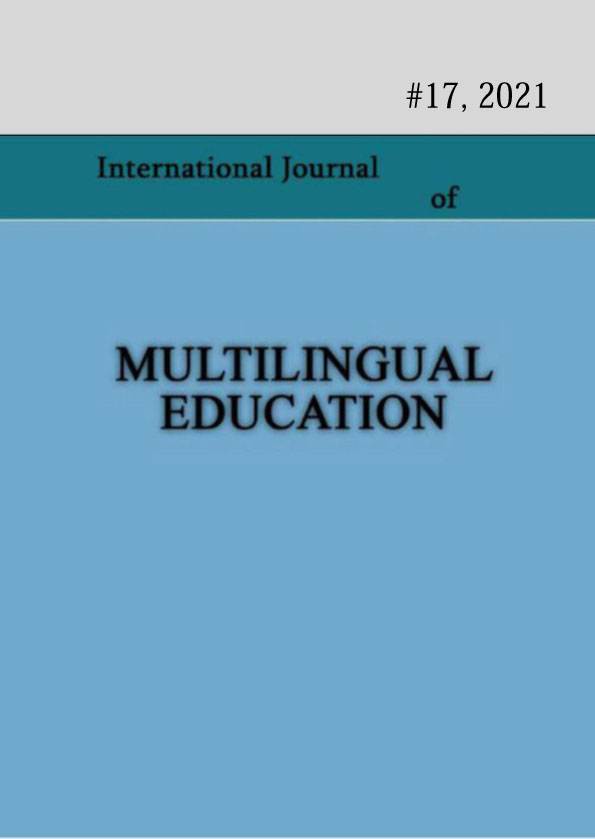Implications on applying the Web 2.0 software to teach a Chinese L2 learner online
Keywords:
Distance Chinese learning, digital tools, E-learning, modular teachingAbstract
The rise of information and communication technologies has increased people’s access to
educational resources and stormed the process of E-learners in the past decades. Recently, the
COVID-19 pandemic forced more people to stay at home to do things via online. Of course,
education is no exception. While numerous distance Chinese learning tools or websites are
booming, not all these tools or websites are suitable because of E-learners’ variations in Chinese
language proficiency, computer literacy, or the complexity of the tools. Hence, being able to choose effective Chinese E-learning tools for Chinese learners is crucial for Teachers of Chinese to Speakers for Other Languages (TCSOL) as it affects not only learners’ motivation and overall success as well as teachers’ teaching pedagogy and performance. The present study analyzed a
series of user-friendly, free Web2.0 digital tools for distance Chinese learners to study along with a textbook, Practical Audio-Visual Chinese 2, designed and carried out experimental teaching courses for Japanese participants with elementary Chinese proficiency. Lastly, it concluded with ST2D implications for TCSOL based the feedback from users.
References
Chang, Y. S. (2010). Discussing modular designs of digital Chinese learning tools, Chung Yuan Journal of Teaching Chinese as a Second Language, 5, 179-198, 2010.
Chen, H. L. (2011). A research on using technology to enhance Chinese language teaching models. Lee, C. C. (host), Step into the innovative and creative world of digital Chinese learning. The 7th International Conference on Internet Chinese Education, Howard Civil Service International House.
Hsin, S. C. (2002). Distance teaching philosophy based on interactionism. Realization and the future of distance Chinese language education (supplementary volume). Japan: Waseda University CCDL Chinese Language Department. Page 1-6.
Huang, S. F. (2010). Designing cross-cultural distance oral Chinese education based on synchronous video conferences. National Taiwan Normal University Department of Chinese as a Second Language, Taipei.
Lan, Y. J. (2009). Practice integrating information technology into Chinese language teaching design philosophy. Jun Shigematsu (host), The metamorphosis of teaching
- Chinese language teaching opportunities in the age of web 2.0. The 6th International Conference on Internet Chinese Education, Howard Civil Service International House.
Lin, H. H., & Lien, Y. C. (2010). EGFR Promotes Lung Tumorigenesis by Activating miR- 7 through a Ras/ERK/Myc Pathway That Targets the Ets2 Transcriptional Repressor ERF: Cancer Research, November 2010.
Shuh, Z. M., (2005). Incorporating information technology into the 4 models of Chinese language learning. The 4th International Conference on Internet Chinese Education, Taipei: National Taiwan Science Education Center.
Wang, F. C., & Chen, S. C. (2003). Advices on using technology to promote Chinese language learning ang, C. Y. (host), The 3rd International Conference on Internet Chinese Education, Grand Hotel Taipei.
Published
How to Cite
Issue
Section
License
Copyright (c) 2021 Qiao-Yu Cai

This work is licensed under a Creative Commons Attribution-NonCommercial 4.0 International License.
Copyright (c) - Authors who publish with this journal agree to the following terms: Authors retain copyright and grant the journal the right of first publication with the work simultaneously licensed under a Creative Commons Attribution-Noncommercial 4.0 International License, which allows others to share the work with an acknowledgement of the work's authorship and initial publication in this journal. Authors are permitted and encouraged to post their work online (e.g., in institutional repositories or on their personal website) prior to and during the submission process, as it can lead to productive exchanges, as well as earlier and greater citation of published work (see The Effect of Open Access). Authors may enter into separate, additional contractual arrangements for the non-exclusive distribution of the journal's published version of the work (e.g., post it to a repository or publish it in a book), with an acknowledgement of its initial publication in this journal.

